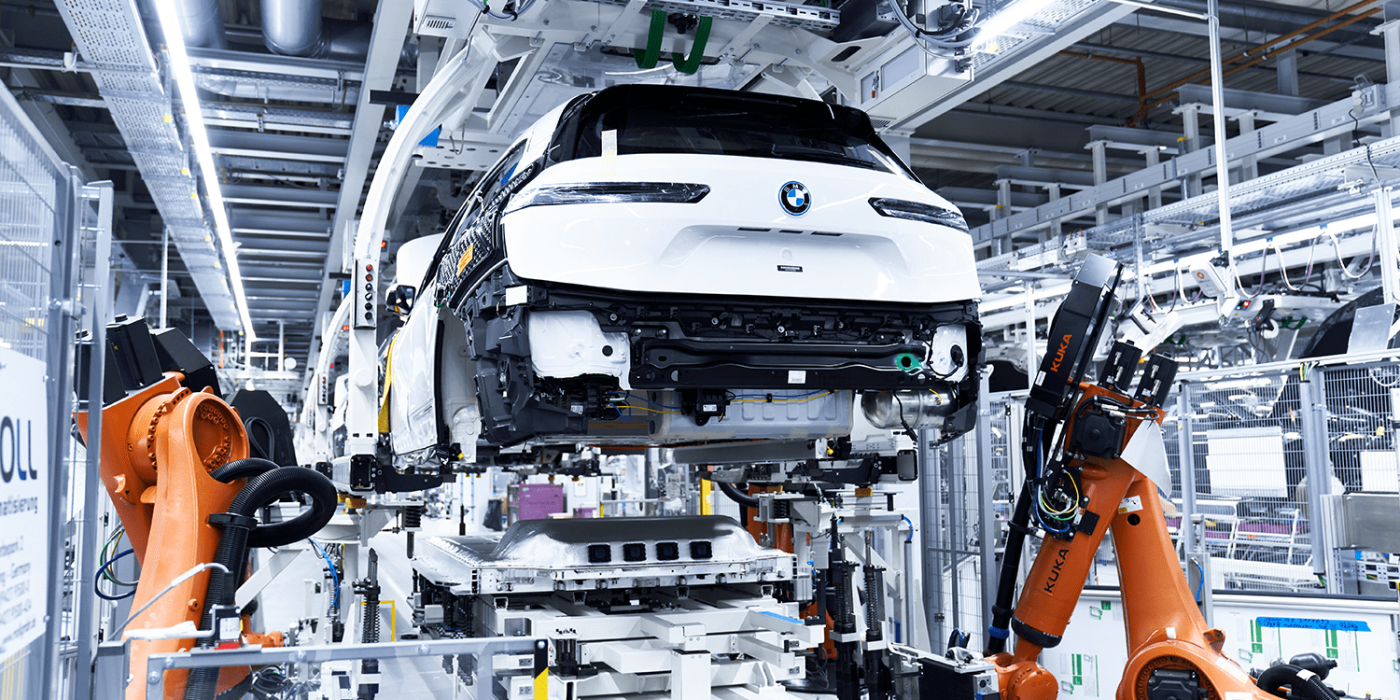BMW expects sales to be 50% electric by 2030
At its Annual General Meeting, the BMW Group announced its intention to avoid the emission of more than 200 million tonnes of CO2 by 2030. The German automaker said this will involve more cleaner drives, but also factors such as the production and recycling of vehicles.
In order to achieve the announced savings of 200 million tonnes of CO2, the company wants to reduce the CO2 footprint of its vehicles over their entire life cycle from raw material extraction and production to the use phase and end-of-life recycling.
An important component is the drive mix of the vehicles sold. Based on its current market expectations, the BMW Group expects at least 50 per cent of its global sales to consist of fully electric vehicles by 2030. This means that in the next ten years, a total of around ten million BEVs will be put on the road. In return, BMW wants to offer only what is really in demand in the case of internal combustion vehicles, according to CEO Oliver Zipse. He said at the AGM that about half of today’s drive variants will no longer exist by 2025.
There was also some criticism surrounding the digital AGM – partly due to the SUV-heavy model policy, and partly of the scope and timetable of the electric transition. Janne Werning from Union Investment criticised the “half-hearted commitment to electromobility”, saying that it is insufficient in the environment of the current electric hype on the stock market. “The future is traded on the stock exchange and BMW seems to have lost it,” he said.
BMW already tightened its electric targets when it presented its business figures for 2020. The Mini brand belonging to the Munich-based carmaker is to reach a BEV share of at least 50 per cent as early as 2027, and Mini is then to be completely electric from “the early 2030s”. “2023 is a tipping point for us: 13 pure e-models will then be on the road. Not only the number is a criterion for us. Also the breadth of the portfolio,” says Zipse. “In 90 per cent of the segments, our customers can then expect at least one fully electric offering – from the compact class to the absolute luxury segment.”
BMW Group says it is going to put out more electric cars from Mini and BMW and that these are also to become cleaner: As BMW writes in its announcement on the occasion of the AGM, for example, the next generation of battery technology, which will be introduced in the “New Class” from the middle of the decade, should reduce the CO2 footprint of the high-voltage storage system to less than half compared to the baseline values of today’s Gen5 technology.
To achieve this, the cell manufacturers are to use green electricity – as is already implemented – while the storage concept and the cell chemistry itself are to make their contribution. Among other things, BMW wants to use an “increasing proportion of secondary materials” in the battery cells and the ready-to-install battery – in other words, recycled raw materials. With the “New Class”, BMW says it wants to introduce a paradigm shift in development: “Secondary first” means that secondary materials are to be used wherever the quality and availability of materials allow.
As the first concrete examples, BMW has announced that the battery housing of the upcoming BMW iX will be made of 30 per cent recycled aluminium. In the battery cell itself, 50 per cent of the nickel used is to be secondary material.
Recycling becomes part of the design
“A climate-friendly car is not created by using green power alone,” said BMW boss Zipse. “We have to gear our vehicles to sustainability from the first day of development: reduce the amount of material used in their manufacture and, above all, think about reuse and recycling from the very beginning.” He added that the company wants to be a pioneer in the field of the circular economy.
According to BMW, recycling will be included in the design of future vehicles. For later recycling, it must be possible to extract the materials in as pure a form as possible. For example, in order to recycle a steel body in such a way that the steel can then be used for a new car, it must be possible to remove the wiring harness beforehand. If the copper from the cables mixes with the steel, the resulting secondary steel no longer meets the high safety requirements of the car industry. At present, however, the cable harnesses are optimised according to other aspects and are sometimes difficult to remove.
BMW Motorrad is also expanding its range with electric vehicles on two wheels for urban areas. In summer, BMW plans to present the series model of the Concept Definition CE 04 e-scooter presented last autumn.
With reporting by Sebastian Schaal, Germany
bmwgroup.com (announcement), bmwgroup.com (Zipse speech)





0 Comments